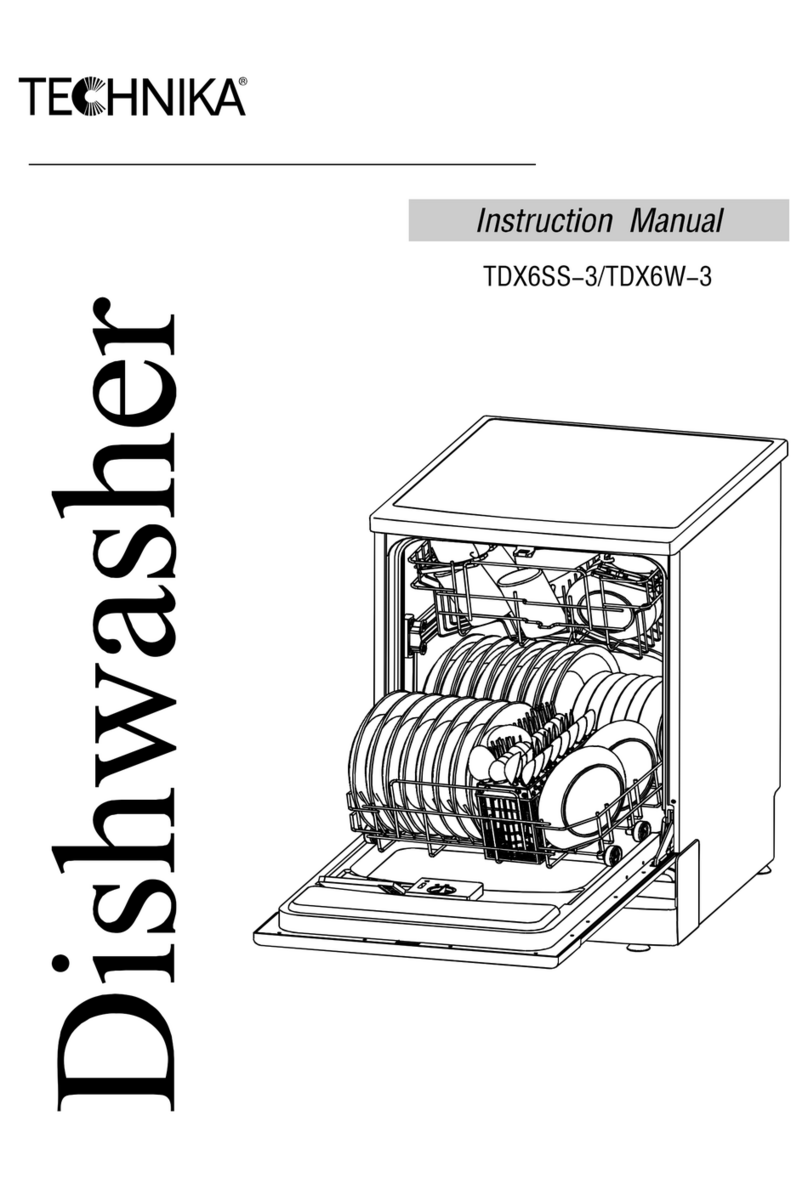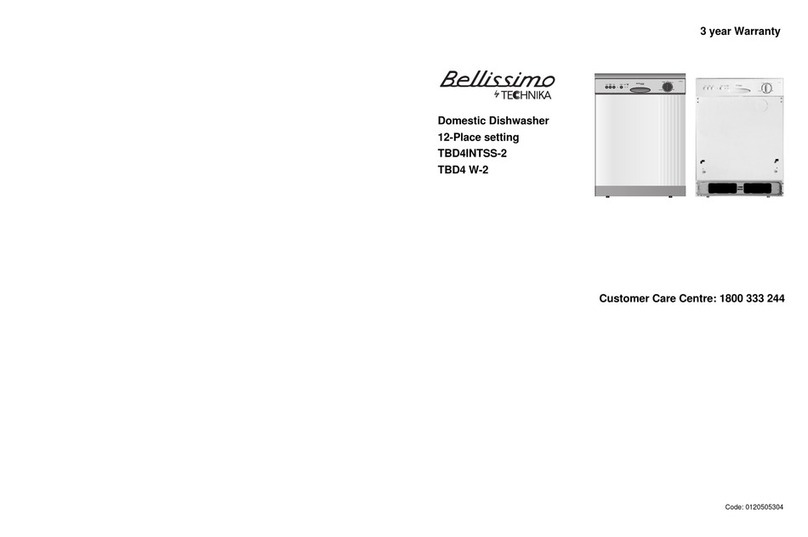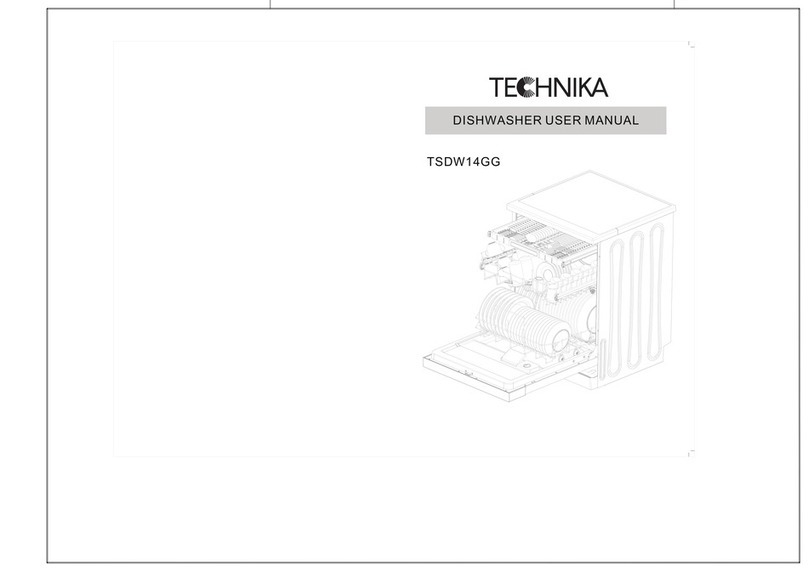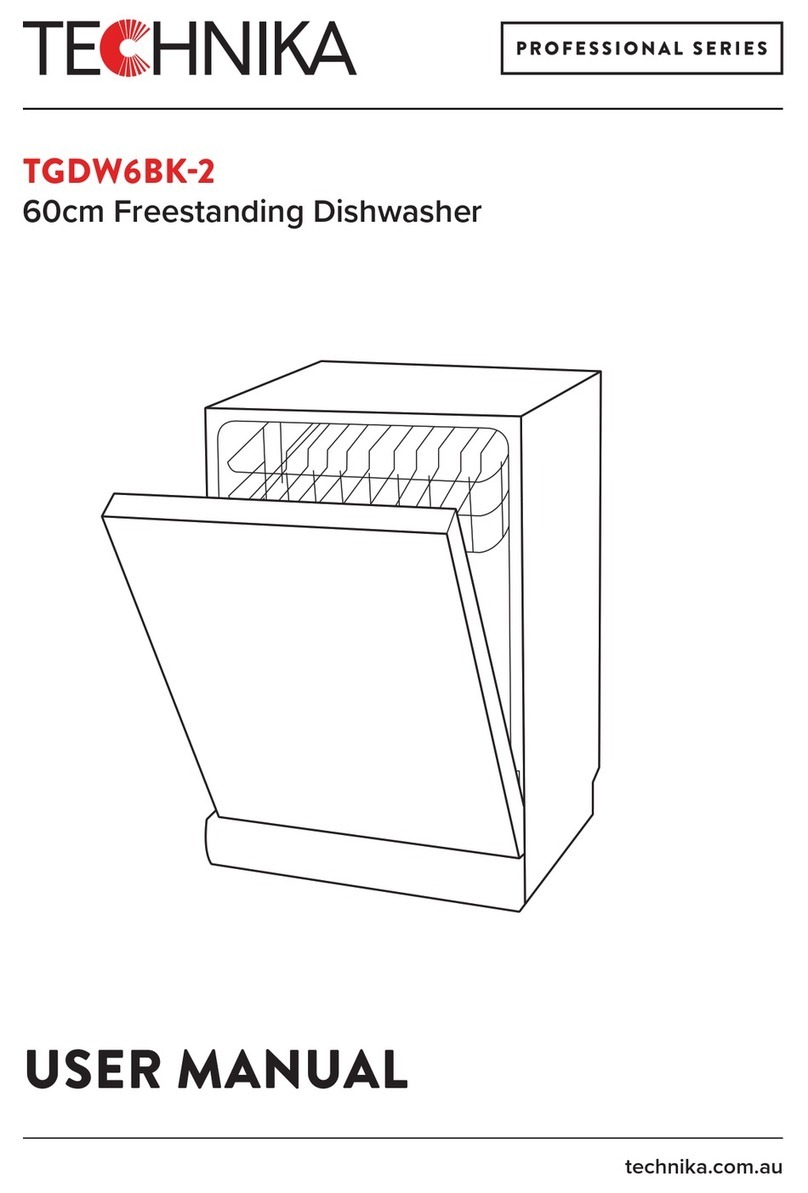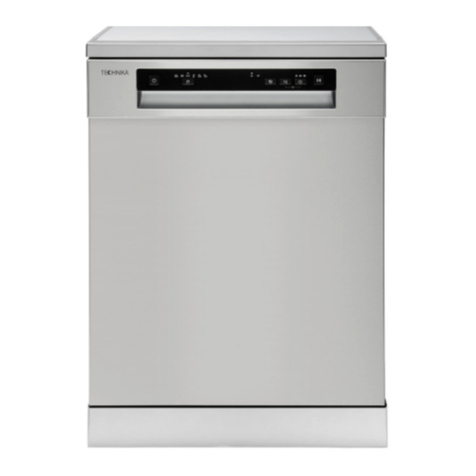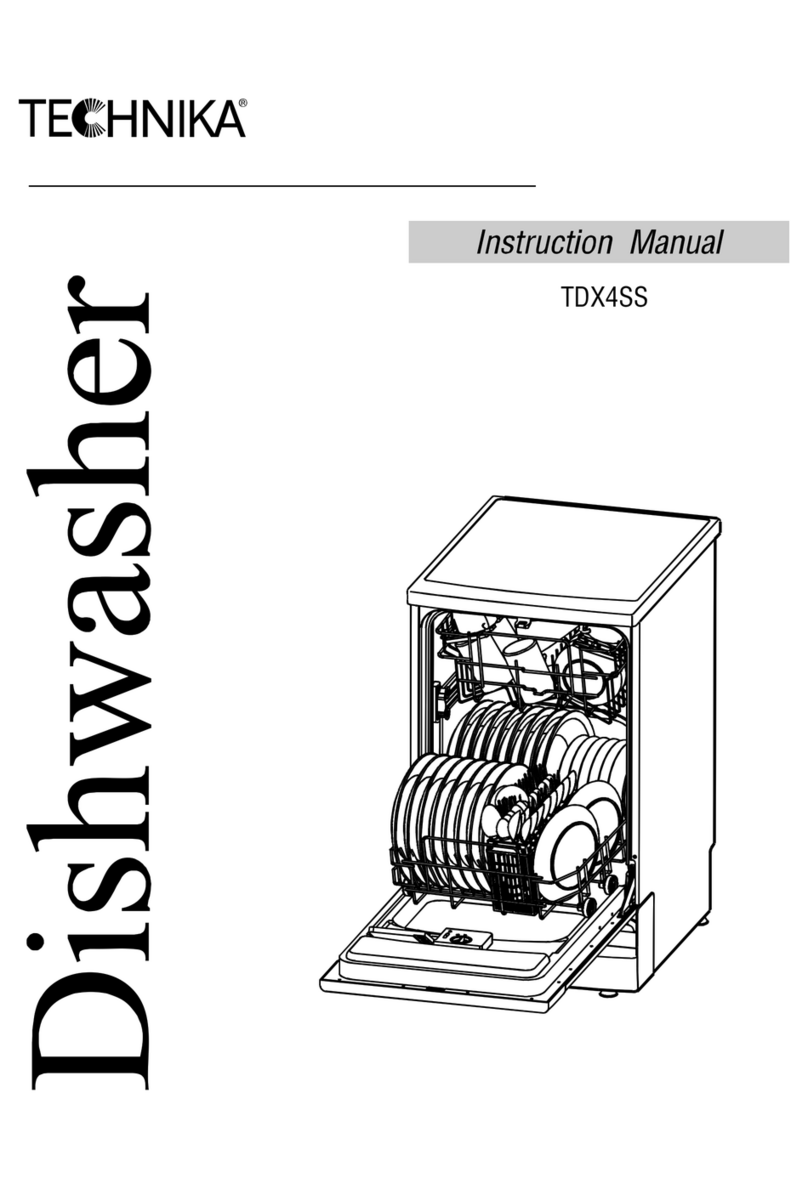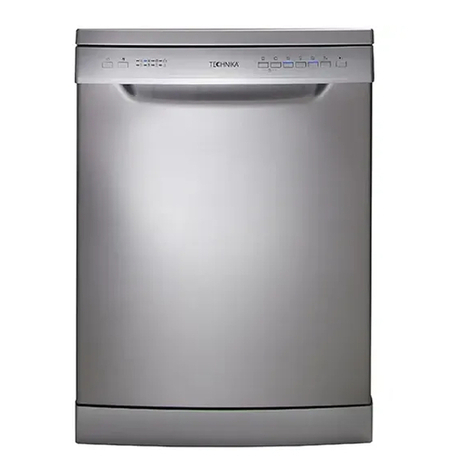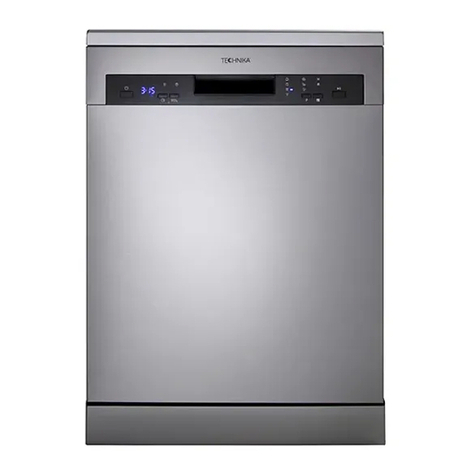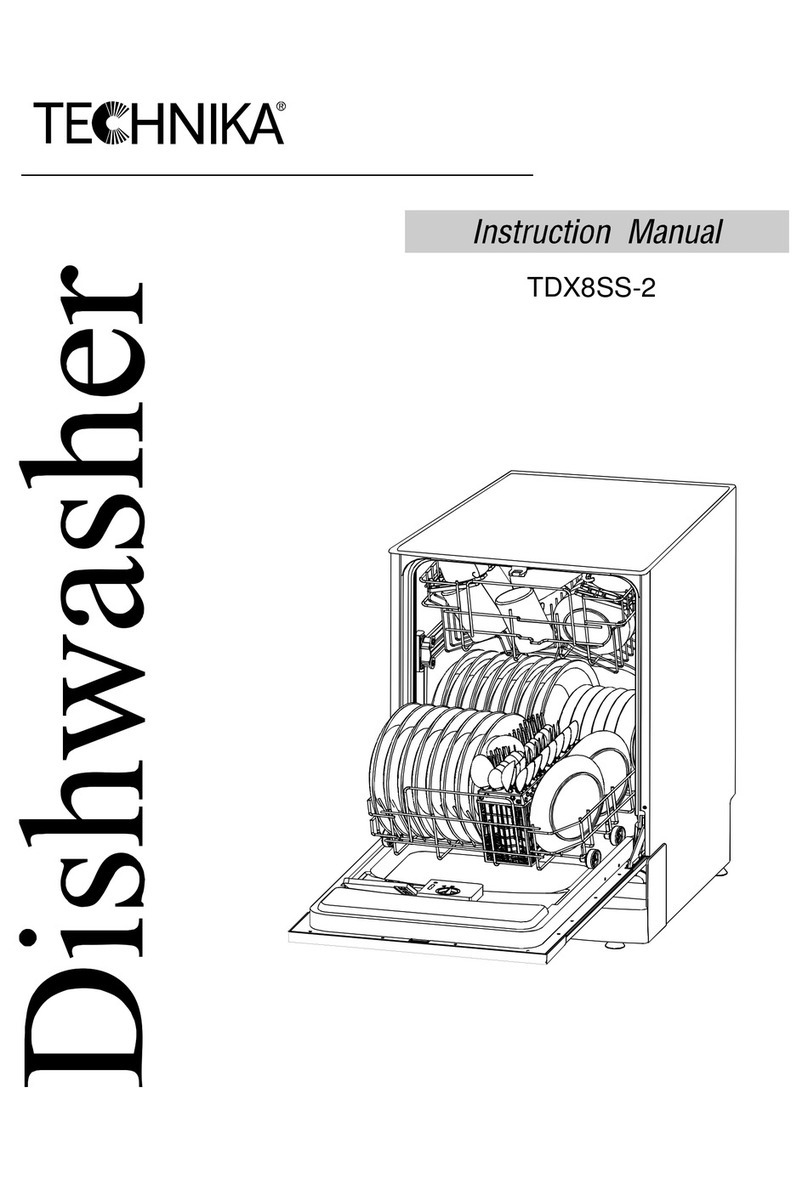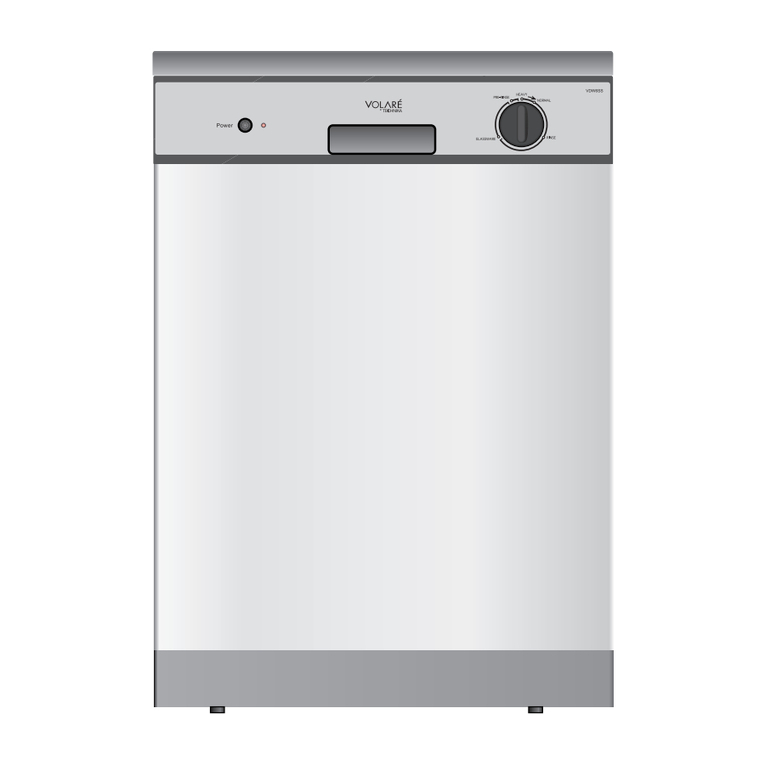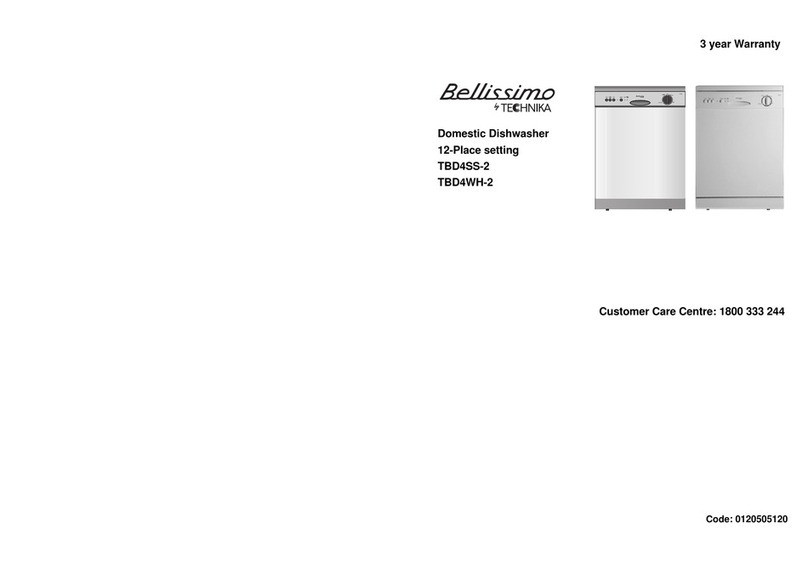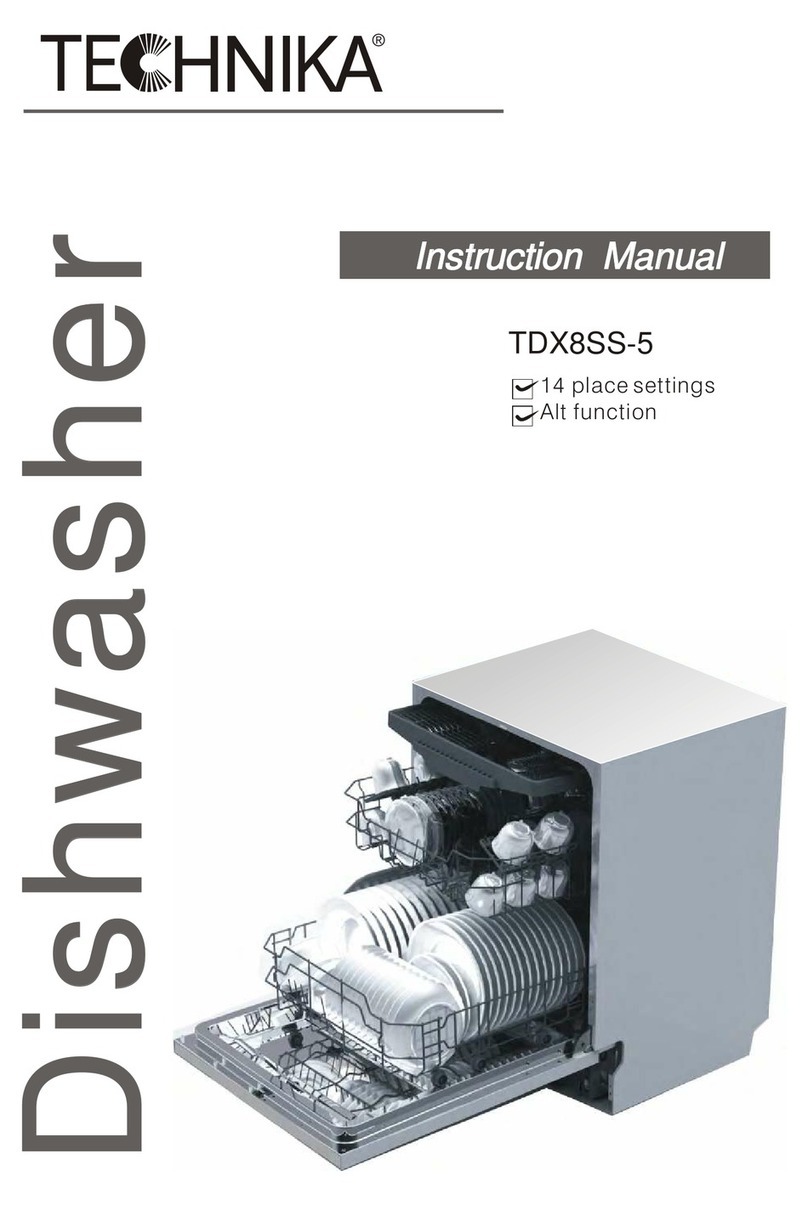
PG 5
SAFETY INFORMATION
• This appliance must be earthed. In the event of a malfunction or breakdown, earthing
will reduce the risk of an electric shock by providing a path of least resistance of electric
current. This appliance is equipped with an earthing conductor plug.
• The plug must be plugged into an appropriate outlet that is installed and earthed in
accordance with all local codes and ordinances.
• Improper connection of the equipment-earthing conductor can result in the risk of an
electric shock.
• Check with a qualified electrician or service representative if you are in doubt whether the
appliance is properly grounded.
• Do not modify the plug provided with the appliance; If it does not fit the outlet.
• Have a proper outlet installed by a qualified electrician.
• Do not abuse, sit on, or stand on the door or dish rack of the dishwasher.
• Do not operate your dishwasher unless all enclosure panels are properly in place.
• Open the door very carefully if the dishwasher is operating, there is a risk of water squirting
out.
• Do not place any heavy objects on or stand on the door when it is open. The appliance
could tip forward.
• When loading items to be washed:
1) Locate sharp items so that they are not likely to damage the door seal;
2) Warning: Knives and other utensils with sharp points must be loaded in the basket
with their points facing down or placed in a horizontal position.
• Some dishwasher detergents are strongly alkaline.
• They can be extremely dangerous if swallowed.
• Avoid contact with the skin and eyes and keep children away from the dishwasher when
the door is open.
• Check that the detergent powder is empty after completion of the wash cycle.
• Do not wash plastic items unless they are marked “dishwasher safe” or the equivalent.
• For unmarked plastic items not so marked, check the manufacturer’s recommendations.
• Use only detergent and rinse agents recommended for use in an automatic dishwasher.
• Never use soap, laundry detergent, or hand washing detergent in your dishwasher.
• The door should not be left open, since this could increase the risk of tripping.
• If the supply cord is damaged, it must be replaced by the manufacturer or its service agent
or a similarly qualified person in order to avoid a hazard.
• During installation, the power supply must not be excessively or dangerously bent or
flattened.
• Do not tamper with controls.
• The appliance needs to be connected to the main water valve using new hose sets. Old
sets should not be reused.
• To save energy, in stand by mode , the appliance will switch o automatically while there is
no any operation in 30 minutes.
• The maximum number of place settings to be washed is 12.
Earthing Instructions
